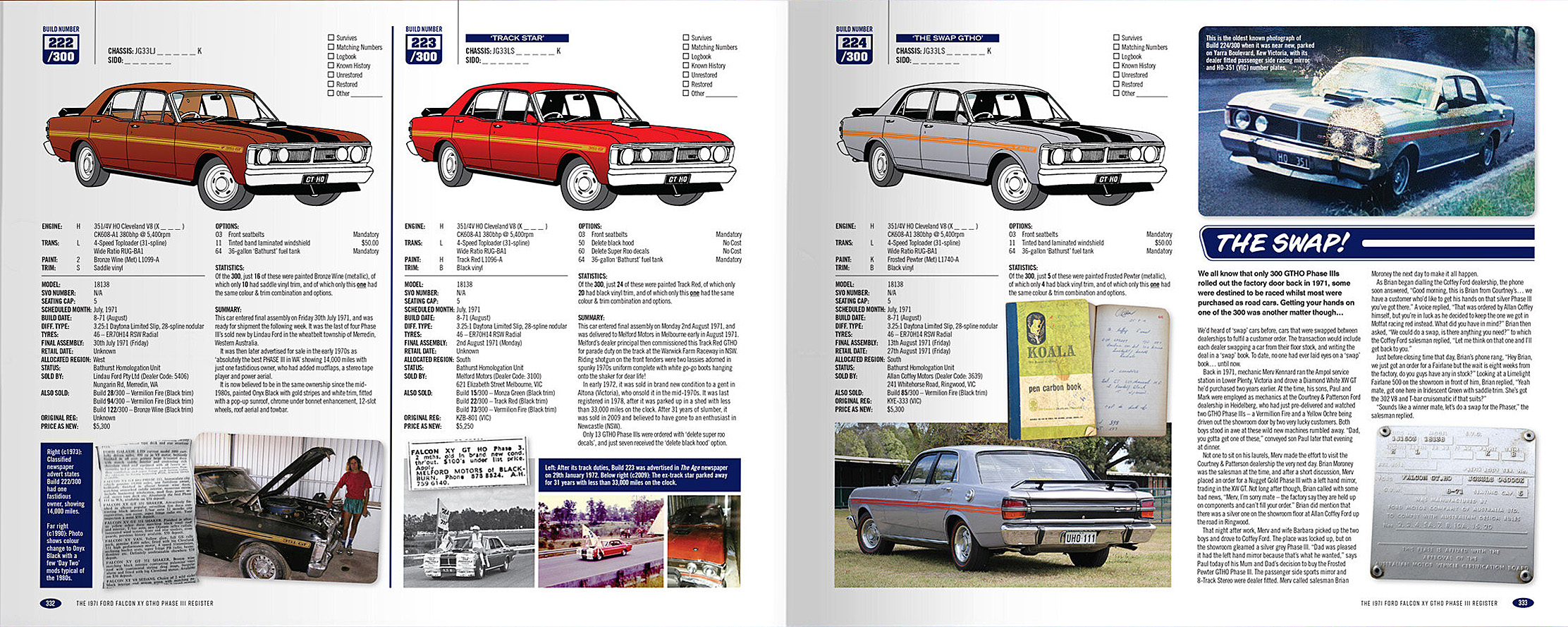Review by Peter Robinson
I first became aware of Ross Vasse reading Survivor Car magazine. It quickly became apparent that Vasse, who produces the new-ish title, was also working on a book devoted entirely to the legendary Ford Falcon GT HO Phase 111.
A few months later, my old Wheels magazine colleague Mel Nichols revealed that he had been in contact with Ross regarding Mel’s famous October, 1971 road test of the Phase 111 and the subsequent, and even more celebrated, HO Down The Hume story from Sports Car World, October 1974.
From the precise way in which Vasse prodded Nichols memory, it was immediately clear that here was a serious researcher who preferred to go to the original source, rather than just rely on already published material. It wasn’t long before Ross and I were exchanging regular emails about the two press test Phase 111s – KXF-508 and KYK-711 – that passed through the magazine’s hands when I was Wheels editor in 1971. Vasse wanted written confirmation that Wheels ran performance figures on both cars, and I was able to explain that the first figures were run by Mel on the road between Bacchus Marsh and Geelong and the second by Mel and me at the Castlereagh Drag Strip.
My firsthand knowledge of Vasse’s meticulous research and persistence is entirely corroborated in his book The 1971 Ford Falcon XY GTHO Phase 111 Register (to give its full title), an extraordinary work that reflects 30-years of passionate investigation into the history of the Phase 111. He covers the creation of the car and follows up with 300 individual stories, one each of the entire the production run. Each car gets at least a half page with a complete breakdown of its specific specifications, assembly details and a summary of its story from production to today. This is not the first book devoted to a single car model, but I’ve never seen a one-model volume that matches Vasse’s effort in terms of completeness, background knowledge and thousands of facts. It is truly encyclopaedic in its coverage.
Ross first began collecting material, anything at all, related to the Phase 111 over 30-year ago: photographs, press clippings, classified advertising, race reports, factory production lists and codes, internal product planning memos, assembly details, dealer listings, and methodically saved it all. Crucially, too, the book provides thorough photographic detail on how to recognise a genuine Phase 111 from one of the many copies, built to take advantage of the HO’s now $1m plus value.
Vasse breaks new ground in revealing that in 1970 Ford looked at assembling a two-door Maverick V8 fastback in Australia, but charismatic MD Bill Bourke rejected the idea and insisted the engineers continue to concentrate of the four door Falcon.

Of the 300 built, 57 were stolen including the original Ford test car, one of 25 built with blueprinted Q.C. engines apparently producing a real 380bhp and not the 300bhp claimed in Ford’s press material.
The $275 blue edition (soft cover) version of the book quickly sold out after it went on sale on November 30 and Ross claims there will be no reprint. He won’t reveal how many copies – rumour suggests 351, including special editions – were printed. I can’t find a copy on the popular digital Far Sale sites, but these books, like the cars, can only appreciate.
Vasse is now writing another book, this one devoted to Lot 6, Mahoney’s Road (Thomastown) the secret home of Ford’s racing and special vehicles division.
The moment orders are open, go for it.

